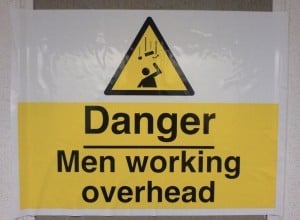Work-related accidents can place a heavy financial toll on businesses. According to the Occupational Safety and Health Administration (OSHA), more than 4.1 million U.S. workers suffer a serious injury while on the job each year. The rate of work-related injuries has dropped by roughly 60% since the Occupational Safety and Health Act (OSHA Act) was signed into law, but it remains a topic that all employers must address.
Identifying The Cost of Work-Related Injury
It’s a common assumption among employers that the only costs associated with work-related injuries come in the form of worker’s compensation. While this is certainly one of the costs, it’s not the only one.
Other costs associated with the work-related injuries include the following:
- Administrative expenses
- Medical costs
- Loss of productivity
- Loss of wages
- Employers’ uninsured costs
- Reduces morale
- Repairs and improvements to prevent future injury
Communicate
You can’t expect to create a ‘safe’ workplace without proper communication. Let employees know that safety is a team-oriented objective and that everyone should do their part to reduce the risk of injury.
Along with verbal communication, you can also incorporate a safety bulletin board into your company’s operations. This board can serve as a general hub for information pertaining to workplace safety, including items such as fire exit routes, response guidelines for cleaning up chemical spills, poison control center phone numbers, upcoming renovation projects, etc. Just remember to place the bulletin board in a convenient, easy-to-access location so workers will notice it on a daily basis.
Offer Incentives
Another tip that’s helpful for creating a safe working environment is to offer incentives to employees who practice good safety habits. Trucking companies often reward drivers for driving 1 million miles without an accident. When a driver reaches this monumental milestone, he or she may be rewarded with a personalized trophy, gift card, bonus check or some other type of incentive. This naturally encourages drivers to use extra caution on the road.
Of course, this is just one example of incentives being used to promote safety. You can take the same principle and apply it to your workplace by rewarding workers who exhibit positive safety behavior.
Identify and Prioritize Hazards
Employers should take the time to both identify and prioritize hazards in the workplace. Potential workplace hazards vary depending on the industry, but some of the most common include slippery floors, broken machinery, buildups of gas and fumes and faulty chemical storage facilities.
